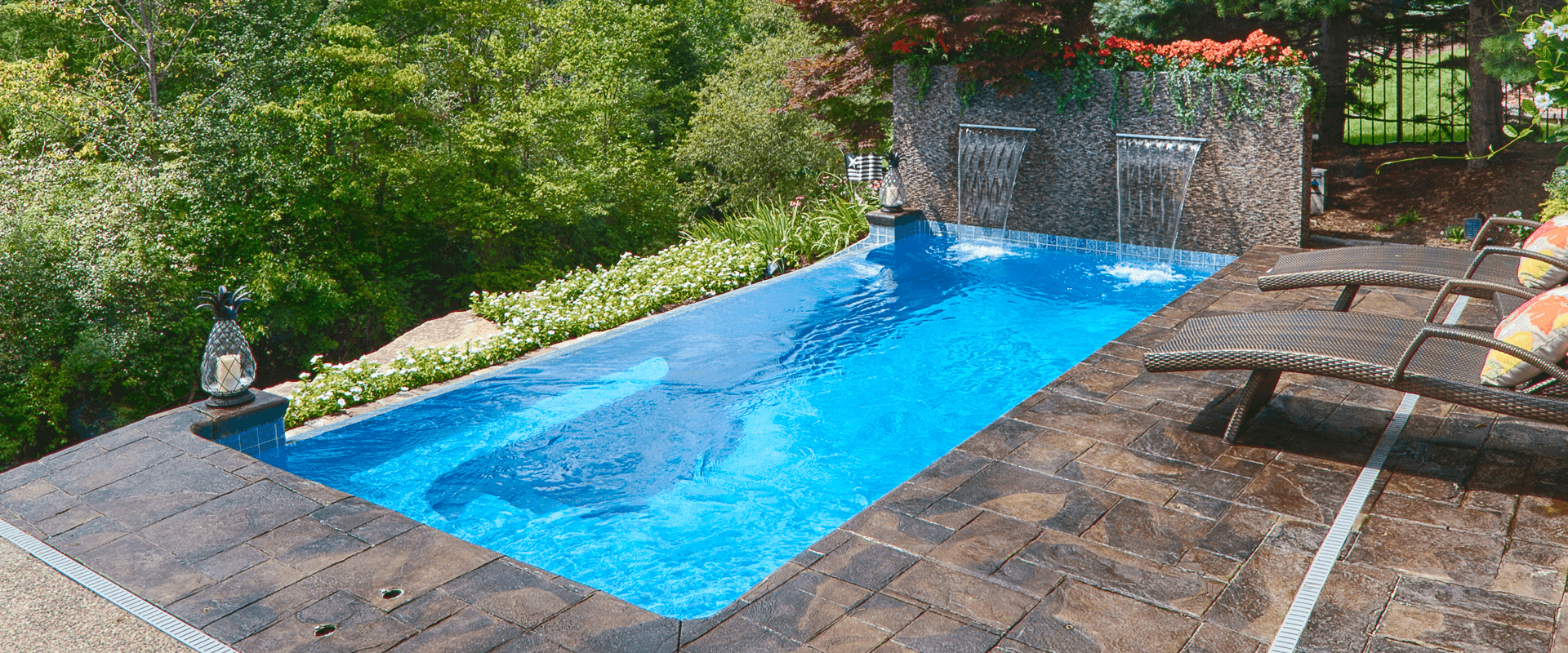877-929-(7665)
It depends. That’s the unsurprising short answer to the question, “how much does an inground pool cost?” A more definitive answer for you lies in examining the specifics of purchasing an inground pool. Pool type, shape, size, and features are critical factors in inground pool prices. Installation, landscaping, and other related items, such as permitting, also factor into inground pool cost. And then, there are annual and periodic maintenance costs to consider. These can vary by type, whether you choose a vinyl liner, gunite, or fiberglass pool. Keep reading to find out more details about inground pool costs.
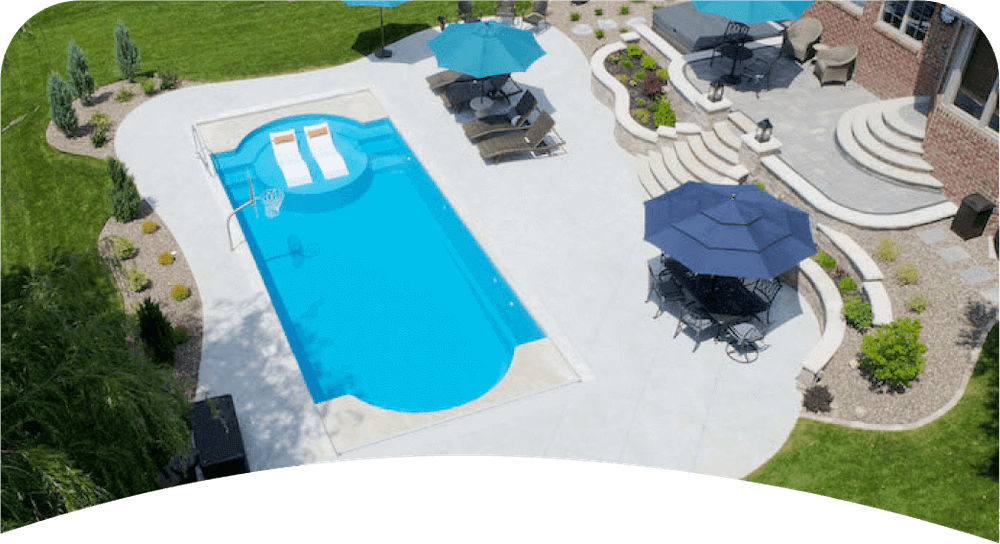
Inground Pool Types Vary by Costs
There are three basic inground pool types: vinyl liner, fiberglass, and gunite (concrete) pools. The type you select will factor into the cost of your inground pool. Compare typical installation costs for each pool type, being sure to examine other considerations that affect the overall cost of an inground pool.
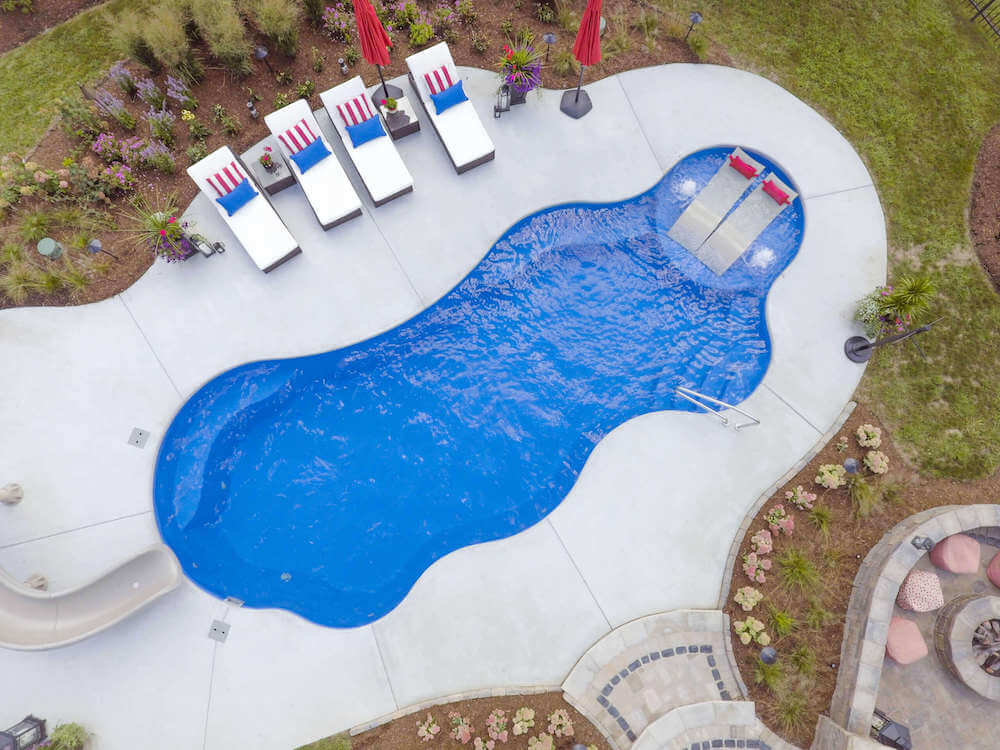
What About Pool Shape And Size?
Pool size and shape can factor into your inground pool cost. Size factors into how much earth you must displace, how much material goes into the pool shell, and how much water you must use, filter, and maintain. Size or shape can determine the type of swimming pool that you can install.
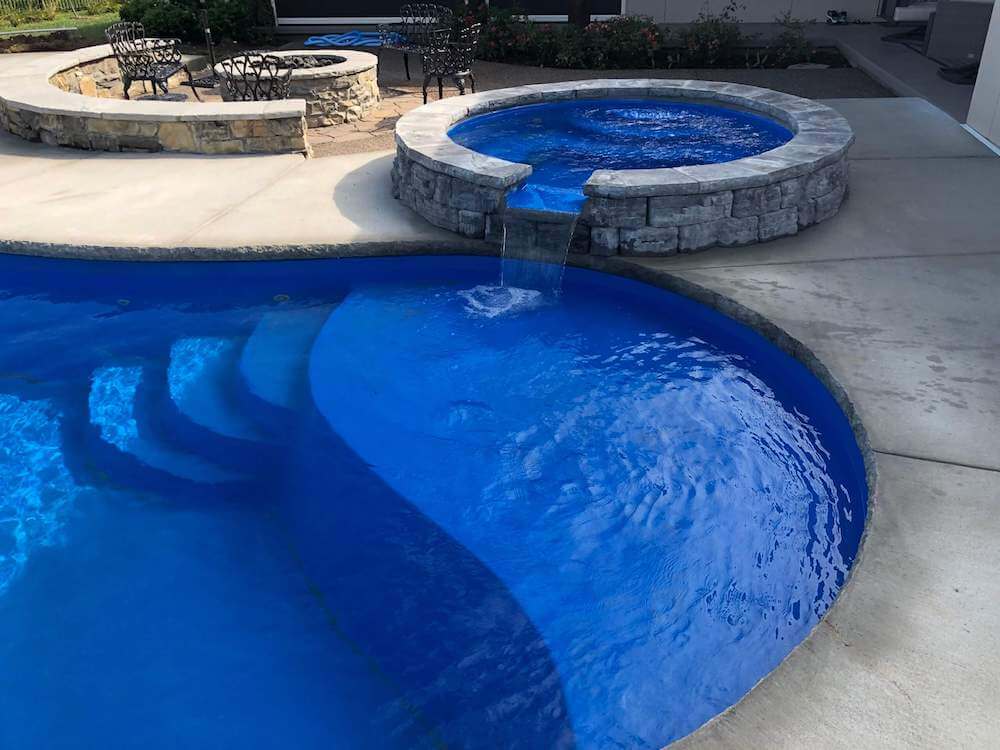
How do Options and Add-ons Affect Cost?
You will need some pool accessories and options. Some of it will depend on the type of pool you get, and the timing of your accessories or optional purchases may depend on the budget. For example, you may want an automatic pool cover with installation, and you may want to add a slide at a later date. Your dealer can help you with your cost plan.
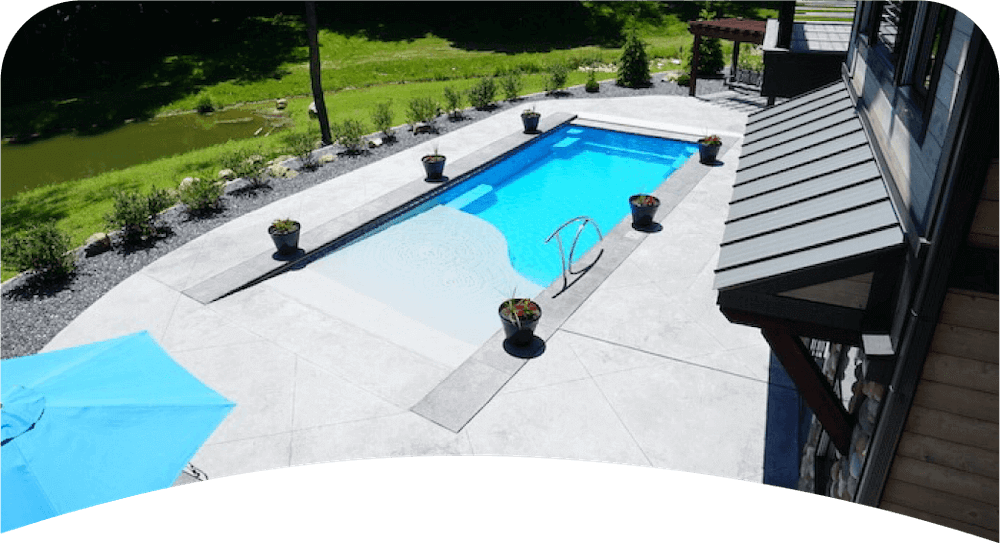
How Much Do High End Features Cost?
Inground pool features that are high-end such as built-in steps (as opposed to ladders), tanning ledges, swim-outs, and beach entry can greatly affect the pool cost. Consider which features you would want and compare pool types. In some instances, your cost will elevate significantly based on pool type.
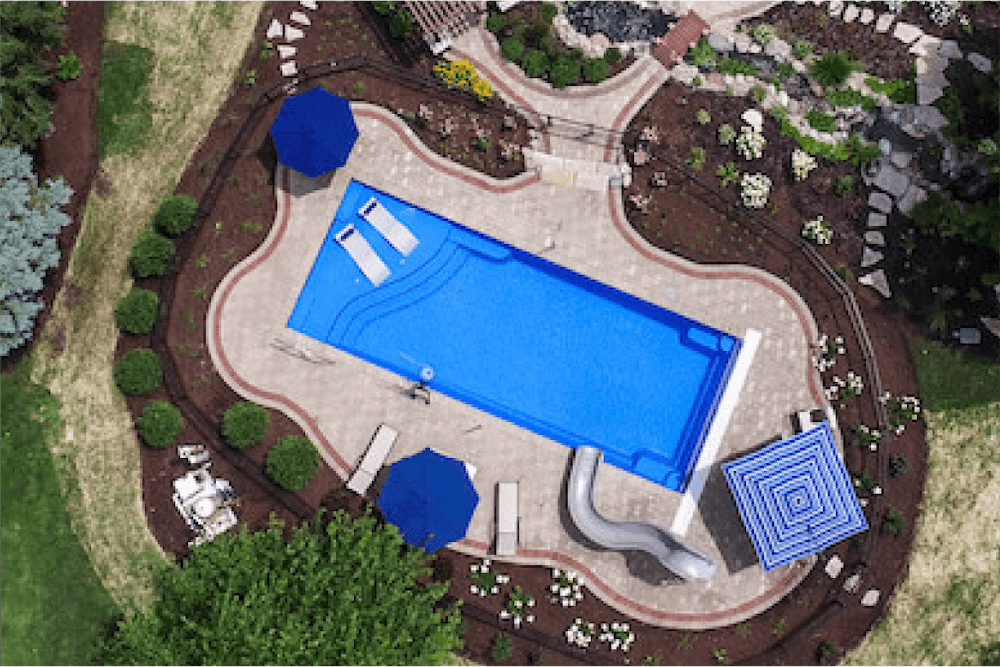
Are Patio and Landscaping Included?
Is a patio included in the cost of an inground pool? Not always. If it is, it's usually a simple concrete area surrounding the pool. You may want something different, such as custom stone, tile, pavers, or stamped concrete. It's something to plan for, and you may budget for it in your installation or separately, deferring that work until later.
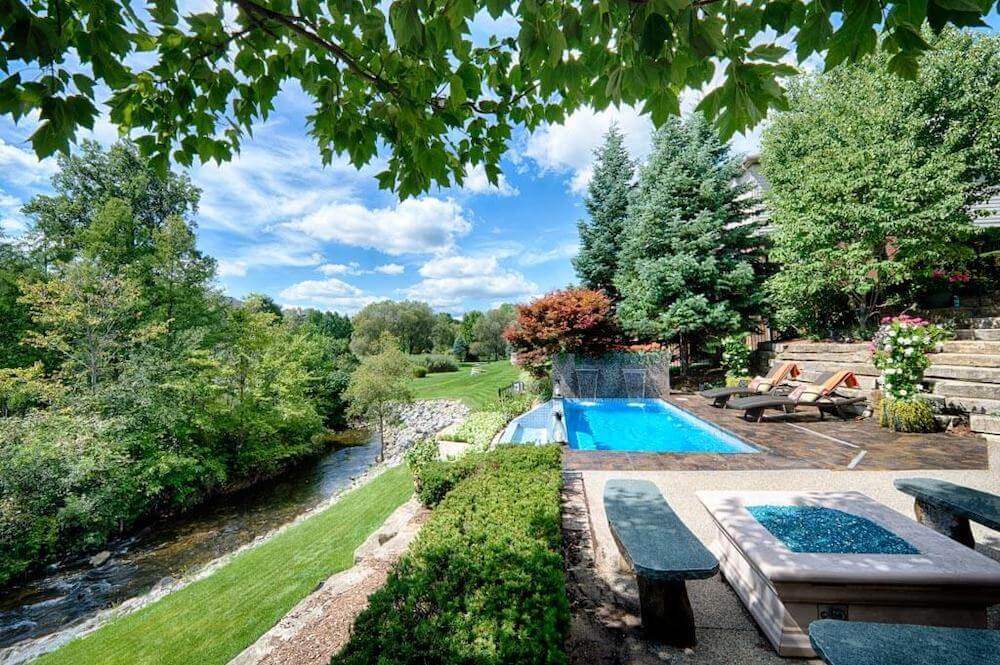
What Causes Installation Costs to Vary?
While some costs are obvious, such as landscaping and accessories, you may incur other costs that you hadn’t considered or thought were included. Your location may require a flat cost permitting fee, and it may require the use of a crane to access the backyard space. Utilities, fencing, and pool covers may also fall under the required category. Knowing what to look for in your estimate will prevent unexpected costs.
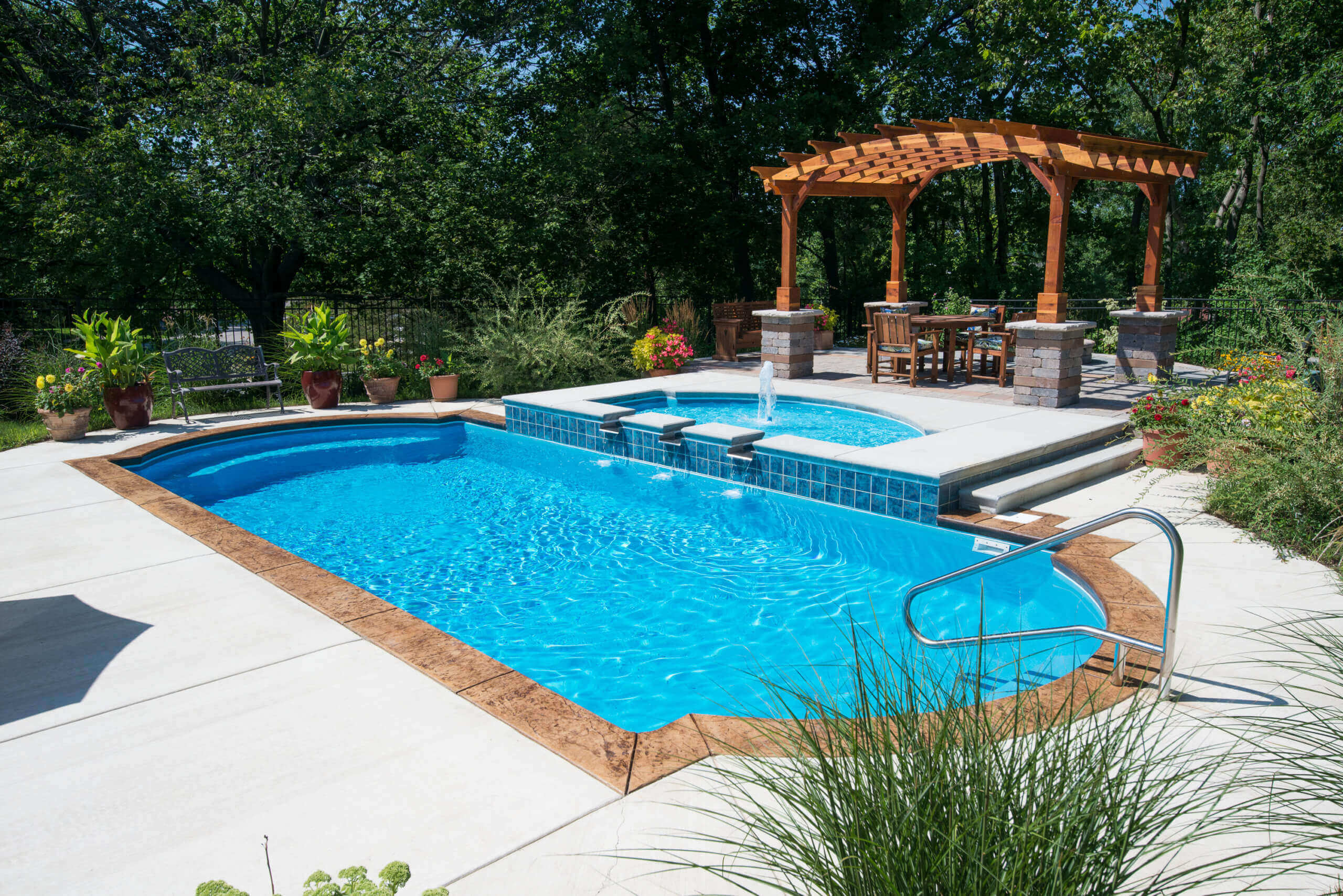
What Are The Annual Maintenance Costs?
It's common for homeowners to calculate the cost of installing an inground pool and ignore the annual maintenance cost. Take some time to understand the differences between yearly maintenance obligations of time and money needed for vinyl liner pools, gunite, and fiberglass. Depending on what you choose, your overall inground pool cost will vary.
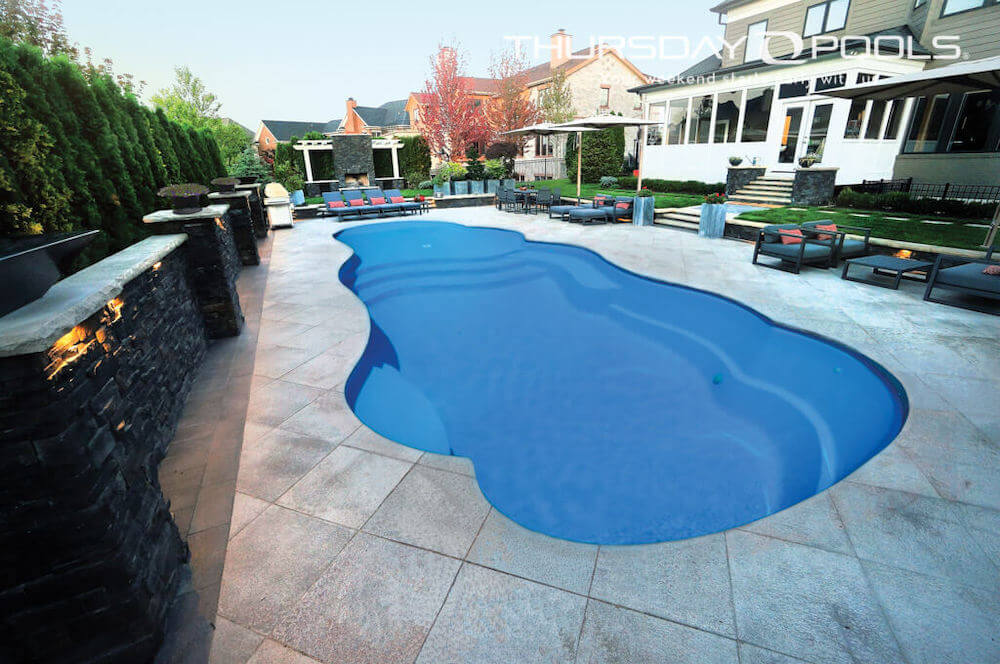
What Are The Lifetime Costs Of Inground Pools?
The lifetime cost of an inground pool is often an afterthought. While upfront costs are the first consideration, it’s wise to evaluate how much your inground pool will cost over the time you will own it. Replacing vinyl liners every eight years or so and resurfacing gunite pools every ten years adds to the lifetime cost of owning these pool types.
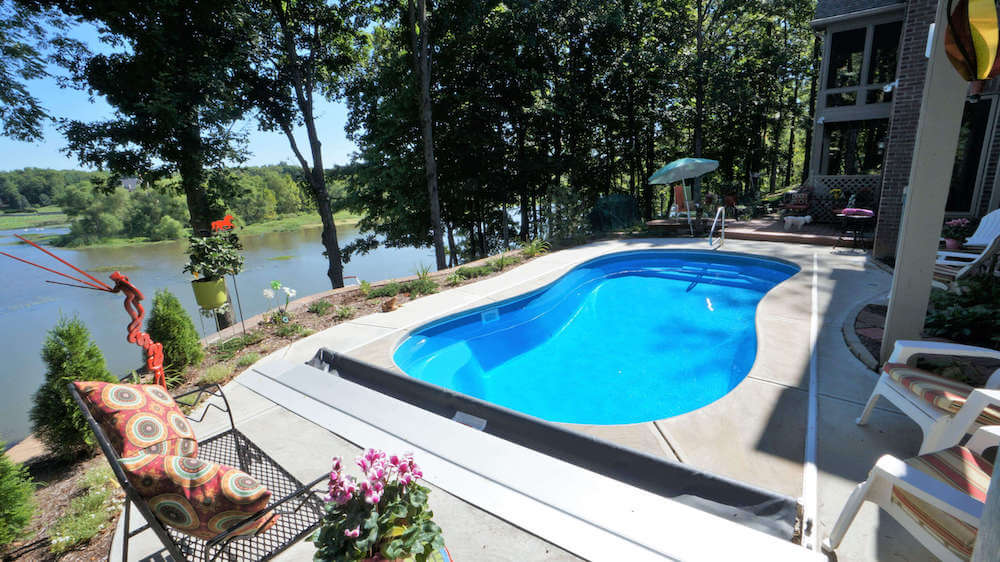
How Does Geography Factor Into Pool Cost?
Your soil plays a big part in the installation cost of your inground pool. Underground rock, clay, sand, and groundwater pressure are considerations for a professional installer. Installers should assess the site before the dig phase and have contingency plans for different types of substrates so that these costs get factored into your pool estimate.
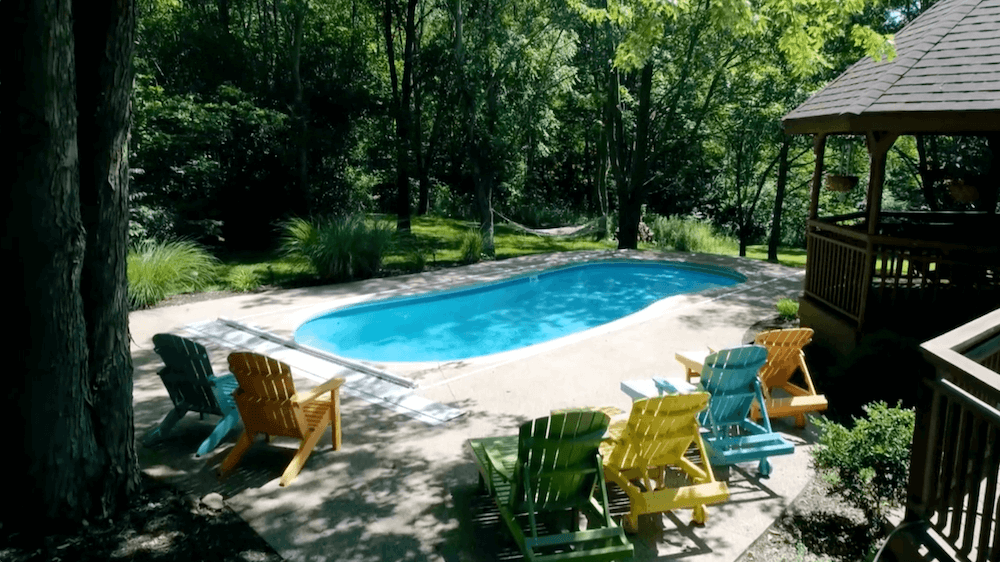
How Do Site Conditions Affect Inground Pool Cost?
Your unique site conditions will impact inground pool costs. An experienced pool builder will evaluate your site prior to providing pricing information. Site condition factors that influence inground pool price are access to the yard as well as running electrical, plumbing, gas lines, and more.
COMPARING INGROUND POOL TYPE COSTS
If you’re looking at inground pools for your backyard, you are probably aware that three main types exist, and you likely are trying to decide on what type of inground pool is best for you. Of course, the more you dig in, the more you realize there is much to be considered. Some questions you may be asking yourself include, “Which type of inground pool lasts the longest?” “Which type of inground pool is cheapest?” “What are the upsides and downsides of each?” We’ll take a deep dive into all three of these types of inground pools, so you can decide for yourself the answer to, “What type of inground pool fits my budget and desires: vinyl, gunite, or fiberglass?”
Purchasing an inground pool is a huge decision. After all, it’s not an easy decision to undo. And while you may have specific reasons for wanting a backyard pool, such as your health, exercise, or to have a gathering place for family and friends, cost is often a consideration. Installation costs vary depending on pool type. If you are simply looking for a quick answer to the question, “How much does an inground pool cost?”:
Vinyl: $35,000 to $65,000
Fiberglass: $54,000 to $102,000
Gunite: $35,000 to $100,000
That said, these prices are averages and actual cost can vary drastically by geographic location. For example, a gunite pool in a sunbelt state is significantly less expensive than one in a state with a freeze-thaw cycle because weather is less of a factor. The bottom line is that an inground pool is a significant investment in your home. As you consider this investment, it’s helpful to understand more about the three types of options offered as well as the pros and cons of each, so you can decide what’s right for you.
THE VARIABLES OF SHAPE AND SIZE IN INGROUND POOL COST
Installers build vinyl liner pools onsite with a series of interconnected panels made of galvanized steel, aluminum, or plastic. Because they are built onsite, builders can offer more custom and variety with regard to shapes and sizes. However, many of these features require expert framing work and challenging vinyl seams, adding to the installation time (usually four to eight weeks) and cost.
Gunite pools are also custom-built onsite. Installers frame gunite pools with concrete blocks and steel rebar and gun concrete through a high-pressure nozzle onto the frame. An application of waterproof plaster covers the textured concrete. Gunite pools can be as large and deep as you want. And you can have this type of pool in any shape imaginable. They come in many different colors and finishes, so creating a one-of-a-kind gunite pool is easy. If cost is a consideration, you should note that gunite is generally the most expensive inground pool to build.
Fiberglass inground pools are built in a factory and come in one piece. Because of this, there is a limit to how deep and large they can be while still being safe for transport. Keep in mind, at around 40 feet long and 6 feet 8 inches deep, that limit is more than enough for most backyard pools. While fiberglass pools come in more and more different colors, shapes, and sizes, they are not fully customizable. You must work within the parameters and choices established by the manufacturers and find the options you like within the molds, finishes, and features offered. This efficiency does help with costs. Fiberglass pool installation usually takes about three weeks on average.
THE ROLE OF OPTIONS AND ADD-ONS IN INGROUND POOL COST
You may desire certain built-in features like a tanning ledge or bench seating with your inground pool. With vinyl or gunite, those will be custom to your build. With a fiberglass pool, they will be particular to the design of the fiberglass pool shell you choose. There are other options or features available that you may choose to enhance your pool enjoyment, safety, or breadth of activities. These will add to your overall pool cost. Here is some price information on common add-ons:
Ladders. Many people opt for built-in steps and zero-entry options (Patent US 10,472,839), but sometimes the deep-end of a pool is enhanced by adding a ladder. Ladders are made with steel, aluminum, or plastic resin and are generally no more than $1,200 each, and they are easy to remove and replace.
Slide. Slides come in many shapes and lengths. The most basic, pre-fabricated slide with ladder costs about $4,500. It’s worth noting that adding a slide can add about $1,000 to your annual homeowner’s insurance premium. A more intricate and curvy slide can run from $8,000 and up depending on the level of customization, landscaping, and related features added.
Bubblers. These are small jets or fountains, usually installed around the pool entry or tanning ledge. They add a fun and pleasing element to the pool experience and depending on the type, typically cost around $1,000-$2,000.
Diving board. Adequate pool depth is required for a diving board, so not all inground pools can have one. However, if your pool is a Type I diving pool, a diving board will usually run around $2,000 installed.
Deck jets. If you’ve seen graceful arcs of water shooting across the deck into the pool, you’ve seen a deck jet. These artful pool options not only look great, but they can also cool the water! They look amazing when paired with specialty lighting. Deck jets typically run around $800 each.
Waterfalls/cascades. Waterfalls, where the water starts above the pool’s waterline and flows into the pool, can be constructed of various materials. Pool builders get creative with concrete, brick, steel, or other materials in different sizes and shapes. Costs can vary widely because of this endless variety, with a simple waterfall costing $1,300 and the most elaborate at $25,000 or more.
LED lighting. Pool lighting doesn’t have to be a basic white spotlight in the deep end anymore. You can choose the number of lights, bulb type, color and size. LED lights that change color are very popular. LED pool lights typically run $900 to $1,300 installed.
Waterline tile. While it can disguise waterline stains on concrete pools, decorative tile is primarily chosen for the aesthetic and comes in many shapes, sizes, colors, and textures. An average style costs $2,500 to $3,200 and should last for about 10 to 15 years.
Automatic pool cleaner. There are various types of automatic vacuum cleaners, including suction-side, pressure-side, and robotic cleaners. Suction cleaners run by connecting to the pool skimmer or a dedicated suction line, so your pump must be on and your filter will need extra cleaning. Pressure cleaners hook into the return lines of your pool and are especially good for cleaning large debris. Robotic cleaners are self-contained and don’t use the pool’s pump or filter. Automatic cleaners can range in price from $400 to $2,500, depending on what you select.
Automated pool controls. Pool automation controls can also be used to automatically monitor and control the pump, pool lights, heater, and water features, like waterfalls. Some even allow you to control your pool features from a mobile phone. Automated controls generally start around $4,500.
HOW MUCH DO HIGH-END FEATURES COST?
You may have once enjoyed features at a resort that you now might find in your backyard pool. Features like tanning ledges, beach entries, and bench seating are easy to find, but these features must be custom-built in a vinyl or gunite pool.
A tanning ledge is a shelf or ledge that is submerged in about 8 to 12 inches of water. As the name suggests, homeowners often choose this feature as it allows them to lay in the water while tanning. However, it’s also an ideal place for children to play. If you choose a fiberglass pool design with a tanning ledge, it’s already built in. If you choose to add a ledge to a concrete pool, it may increase the cost of your pool and take away some of your swimming space. With a vinyl liner, a tanning ledge also costs extra and can be subject to tearing if you’re not very careful in placing a lounge on its surface. Plus, it can be slippery in a vinyl pool. Built-in steps and swim-outs are the same case.
A beach entry (or zero entry) is an inground swimming pool designed with an entry that has a very slight slope into the pool, providing you with a long, slow, gradual entry (Patent US 10,358,837 and 10,472,839).
A beach entry can theoretically be created with a vinyl pool, but most pool builders would probably steer you towards concrete or fiberglass if this is an important feature to you. The biggest reason is that the vinyl liner needs the weight of water on it to stay in place, so the shallow nature of a beach entry isn’t ideal for the structure of vinyl pools. If you opt to have this feature custom-built into your vinyl pool, be prepared to add anywhere from three to ten thousand dollars to your inground pool cost.
Price and available space are definitely factors in gunite beach entry pools–they are an expensive add-on feature (count on at least $9,000 more on average) in custom gunite pools, and they require a large yard space to create the gradual sloped entry.
While fiberglass beach entry pools do require a good amount of space, they’ll take up a bit less than a gunite beach entry pool because they can have a combination of a shorter beach entry that leads to a few steps into the pool. If you choose a fiberglass beach entry design, there is no extra cost as the feature is built in.
HOW MUCH DO A PATIO AND LANDSCAPING ADD TO THE COST OF AN INGROUND POOL?
Many pool buyers will opt for a standard broom-finish concrete deck, which averages $6.50 per square foot. Of course, there are many options and trade-offs to consider as you budget your patio and landscaping. Other materials common to decking are stamped concrete and pavers. Stamped concrete will run between $20 to $26 per square foot, and pavers range from $16 to $60 per square foot. Pavers can run from standard stone material to more expensive travertine. The cost of a 1,000 square foot patio could run from $8,000 for brushed concrete to the neighborhood of $16,000 for travertine pavers. Pavers are easy to reset if they move or settle, but they cost more and take more time to install.
There are several other landscaping options:
Shrubs, plants, and trees. At the cost of $4 to $12 per square foot, a little foliage can go a long way to making your pool feel like it’s right at home in your backyard.
Landscaping rocks. Rocks can bring a pop of color and texture to your pool surroundings at a cost ranging from $1 to $10 per square foot.
Retaining walls. Retaining walls can bring dimension to an otherwise flat area. They’re also well-suited for making use of leftover fill dirt. Retaining walls range from $5 to $20 per square foot.
All these estimates vary by time and place. It’s good to discuss your plans with your dealer and get detailed estimates.
INGROUND POOL INSTALLATION COST VARIABLES
Upfront installation costs usually include dirt excavation, delivery, some decking, and utility work. You’ll have choices to make if you want to customize your decking, fencing, lighting, and so on. Some installation costs are variable, and a dealer may or may not include them in the cost of your inground pool installation.
Permits and variances. Your dealer should be familiar with local ordinances, including pool permits and inspections for safety. Permits and inspections may run from $200 to $600. Electrical or plumbing may require separate licenses and add to that base cost.
Fencing. In some locales, fencing is a requirement. Your dealer should be familiar with these guidelines. Fence requirements may include specific materials, height, and other design guidelines. Many states require a four or five-foot-high fence with an inward swinging, self-closing gate. Fence cost varies with the choice of material. Fences made with cheaper material, like chain-link, could run from $2,000 to $6,000, and more expensive options like wrought iron could cost as much as $12,000. The average cost of installing a pool fence is $15 to $50 per linear foot.
Pool cover. Covers usually fall into three categories: winter, manual, and automatic. Winter covers are the most cumbersome to deal with and the cheapest at $400 to $2,000. Manual covers typically use a track and reel system and range from $500 to $5,000 depending on the materials used. Safety materials drive the cost significantly higher. Automatic pool covers are convenient but do require electrical hookup. They usually start around $10,000.
Electrical work. Budget around $3,000 to $5,000, possibly more, for electrical work. It’s an essential installation piece, affecting both filtration and lighting. You might add or upgrade a breaker box for your backyard. Your dealer or a recommended electrical contractor should be able to assess your situation and advise accordingly.
Dirt hauling. The excavation at your pool site will require removing the equivalent of a one or two-car garage in terms of dirt volume. You may choose to use some of that earth for landscaping or lawn leveling, or you may have it hauled away. A ballpark estimate for pool excavation cost is $200 per cubic yard.
Equipment. Some equipment will be standard with your installation. Likely included in this list are filtration, skimmer and jets, a vacuum and pole, vacuum hose, skim net, wall brush, thermometer, and chemical test strips. You may have additional items that are standard or add-on.
Pool heater. Most people choose either a gas or a heat pump heater. A natural gas or a propane pool heater heats your pool the fastest, can be used at any outdoor temperature, and costs between $150 to $800 on average per month to run. The heater itself costs an average of $3,500 to $4,500, not including the cost of gas and electrical hookup. While a heat pump pool heater costs significantly less per month to run (around $50 to $100 per month), it takes a few days to heat your pool and can only run if the outside temperature is 55 degrees or higher. A heat pump pool heater typically costs $5,000 to $6,500 installed.
Backfill. Vinyl liner and gunite pools don’t use backfill. Most fiberglass installations will include backfill, but consult with your dealer to be sure. Backfill, usually crushed stone, supports the fiberglass pool as it is dropped into place. Your dealer usually specifies the material based on your site’s geography and ground characteristics. However, innovations like Thursday Pools Backfill Eliminator help installers create a level and sturdy pool with proper groundwater flow, thus eliminating the adverse effects of standing water or excess hydrostatic pressure.
Restoration. Installing an inground pool is a large construction job. For several days to weeks, your backyard and adjoining location will host any number of trucks, cranes, jackhammers, and other pieces of heavy equipment. An essential part of the installation is the clean-up that needs to occur afterward. Make sure you’ve discussed this with your dealer as you plan. Depending on the size and site, costs will vary.
Water. Water fill-up may or may not be standard with the installation of your pool. Check with your dealer.
HOW MUCH DOES MAINTENANCE COST FOR INGROUND POOLS?
With all inground pools, you’ll need to stay on top of skimming, testing, and vacuuming. Other factors, namely the type of pool you choose, will affect how much regular maintenance is required.
Vinyl Pools. Vinyl pool owners need to be careful with pool chemistry. Unbalanced water can damage the material, and the seams and wrinkles of the vinyl can attract algae. Algae in seams and wrinkles can be tricky, time-consuming, and expensive to get under control. Expect to spend 3 to 6 hours per week on vinyl pool maintenance. The average ten-year cost of care for vinyl pools is around $11,500.
Gunite Pools. Gunite (concrete) is porous and rough. And it is alkaline. More chemicals are needed to keep pH levels balanced and algae and other minerals at bay. On average, gunite pool owners should expect to spend 4 to 8 hours per week on pool maintenance. Over ten years, the average maintenance cost for a gunite pool is $27,400.
Fiberglass Pools. Fiberglass pools are smooth, non-porous, and non-reactive in ways that vinyl and concrete pools cannot be. You can expect to use fewer chemicals with fiberglass pools and keep your maintenance closer to 1 hour per week. Fiberglass pools require the least cost for maintenance, with ten-year expenses averaging $3,750.
HOW MUCH DOES AN INGROUND POOL REALLY COST OVER ITS LIFETIME?
Over the life of your inground pool, you should weigh upfront installation costs, maintenance, repair, and replacement costs. But you may also want to consider downtime. During maintenance, repairs, and replacement, you will inevitably have time that you can’t swim. How valuable is swim time to you?
Vinyl-liner. Vinyl pool liners can puncture or tear, whether from pet claws, fallen limbs, or other sharp items. In addition, the liners need to be replaced, on average, every 8 to 12 years. This replacement requires draining and refilling the pool with downtime in-between. A new liner’s average cost is between $3,500 to $5,000. If a pool is larger or more freeform, the cost can be higher.
Gunite. Gunite (concrete) pools would seem the most durable to the uninitiated pool buyer. Concrete seems like a strong building material. It is, but it is also porous, which makes it sensitive. The permeable surface can crack during the winter freeze/thaw cycle, and it can invite algae, calcium, and other hard minerals into its nooks and crannies. The gunite’s sensitivity to the elements makes it less durable than it might first appear. The average cost to resurface a gunite pool is about $8,000, and you need to do it around every 10-15 years.
Fiberglass. Fiberglass has a growing reputation for durability. A properly installed and maintained fiberglass pool can last as long as 50 years without the need for major repair or replacement. The robust and multilayered fiberglass material is structurally sound, and innovations like the Geo-Anchor Pool Wall help the modern fiberglass pool resist movement and groundwater pressure.
WHAT ROLE DOES GEOGRAPHY PLAY IN POOL COST?
Geography, topography, and neighborhood all factor into your inground pool cost. The installation of a pool located on a steep Colorado mountainside will have different requirements than a pool installed adjacent to a flat agricultural plot in the midwest. Your site may also have unique topographical characteristics or HOA considerations.
Elevation, surrounding trees, and lot size are a few factors that can affect access. As you plan your installation, you’ll need to work with your dealer to understand what equipment will be required and how each piece of equipment will access your backyard. Difficult access could increase your installation cost or even preclude the construction of the pool you desire.
Some municipalities or HOA have explicit guidelines for homeowners with pools. These guidelines may designate the need for pool covers, fencing, or pool placement and its utilities.
HOW DO SITE CONDITIONS AFFECT INGROUND POOL COST?
Your unique site conditions will impact inground pool costs. An experienced pool builder will insist on evaluating your site before providing pricing information. Among the items that will impact your inground pool cost are:
Access: Are there trees or overhead power lines that may impede access? Do you have enough room for heavy equipment and concrete trucks to reach the backyard? Heavy equipment needs 8 to 10 feet of width to pass through. If gaining access requires temporarily or permanently removing structures, extra cost will be incurred.
Landscaping: Will existing trees, shrubbery, decks, and/or concrete patios need to be removed or replaced?
Unmapped Utilities: Sometimes, water, gas, electric, sewage, septic, cable, and phone lines are not mapped, especially in older neighborhoods. Discovering any of these during excavation can increase costs.
Soil: Expansive soil, such as clay, collapsible soil, or sand, may shift and cause problems installing the pool. It may also mean trouble down the line. Remedying the soil makeup can increase the cost.
Septic System: Do you have a septic system? Rerouting septic system fingers or changing your pool location can both add to your cost.
Electrical: Does your existing breaker box have the capacity to accommodate your pool system? Will the pool be at a significant distance from the box? Upgrading or adding electrical will increase your overall pool cost.
Plumbing: Where do you want your pool equipment? How far will the plumbing lines have to run? Some plumbing is usually factored in, but the possibility exists for extra plumbing costs.
Elevations and Slopes: What is the change in elevation? Will you need a retaining wall? Variances in the upward or downward slope of the ground may factor into your inground pool cost.
Water: How do you plan to fill your pool? If water has to be hauled in, how accessible is your pool area for a tank truck?
OTHER COST FACTORS FOR INGROUND POOLS
Pool Builder. Not all pool builders are the same. Some installers may take a production-like approach, with specialized crews handling particular tasks. Other builders may be small crews who handle each aspect of the process. One is not necessarily better than the other, but the choice can affect the process. Interview several dealers or installers. Do they have references or reviews for installing inground pools? Do pool manufacturers verify them? Early due diligence on your part can avoid costly headaches later.
Environmental Costs. Vinyl liners need to be replaced every five to seven years or so. They usually end up in landfills. The steel panels of vinyl pools can leach chemicals and rust into the groundwater. Gunite pools have steel mesh and rebar structures with similar effects. Gunite pools also require acid washing to beat back algae and other minerals. Fiberglass pools do not need resurfacing and do not present the same groundwater issues.
Fiberglass Material. You may pay a little more for a quality fiberglass pool. The value and payoff are low maintenance, durability, and comfort. Thursday Pools is the only ISO 9001 certified manufacturer of fiberglass pools. Meeting these rigorous quality standards ensures the best materials and production methods for your pool. The ingredients that go into the construction of a Thursday Pools inground fiberglass pool include:
- Gel coat
- 100% vinyl ester barrier coat
- A layer of chopped fiberglass
- A second layer of chopped fiberglass
- Hand-laid woven ‘roving’ fiberglass
- A third layer of chopped fiberglass
- Honeycomb core
- A fourth layer of chopped fiberglass
- Fifth and final application of chopped fiberglass
